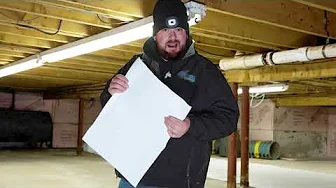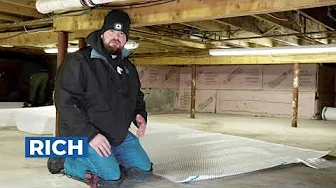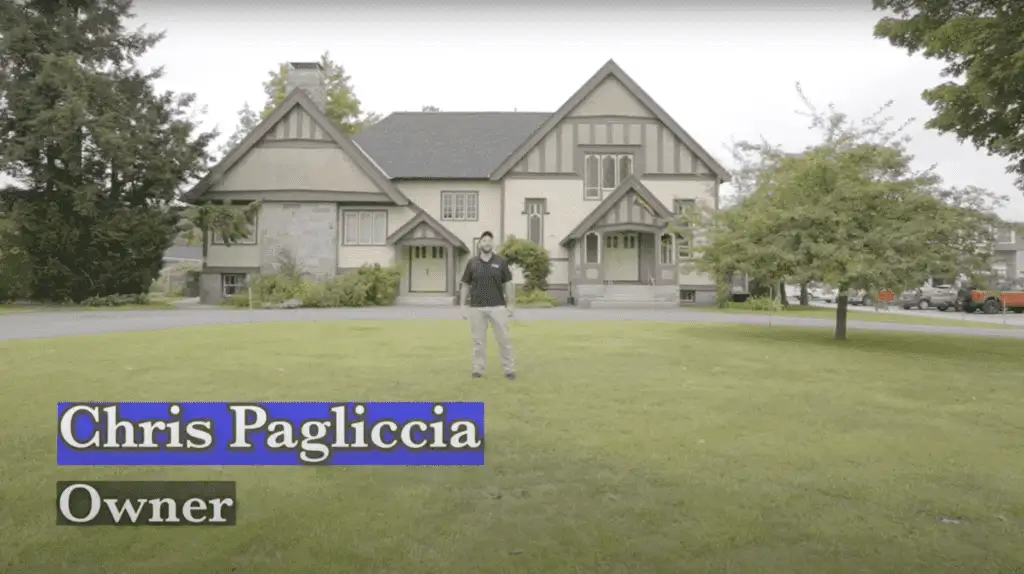Foundation Crack Repair Pelham NH
Cracks in a foundation are more than an eyesore. They can weaken your home’s structural integrity, allow water to seep into your basement, and increase the risk of costly damage over time. In a place like Pelham, NH, where changing seasons and temperature fluctuations can cause soil movement, keeping your foundation in top condition is crucial for long-term stability.
Real People - Real Great Results
Crawl Space Video Playlist
What Causes Foundation Cracks?
Foundation cracks don’t happen overnight. They’re the result of a slow burn—natural forces, poor planning, or a mix of both. Let’s break it down:
- Soil Movement: Think of the earth beneath your foundation as a living, breathing entity. In Pelham, NH, where the seasons shuffle between rain-soaked springs and brittle-cold winters, the soil plays a massive role in foundation health. Clay-rich soil, in particular, acts like a sponge—swelling when wet and shrinking when dry. This shift puts relentless pressure on your foundation walls, eventually leading to cracks.
- Settling: Your home isn’t sitting on a magic carpet; it’s on soil that’s always compacting and adjusting. Over time, this natural settling can create stress points in the foundation, resulting in cracks. This is especially true in areas with mixed soil composition—a hallmark of many older Pelham neighborhoods.
- Water Damage: Water isn’t just a foundation’s enemy; it’s a sabotage artist. Poor drainage systems, clogged gutters, or grading issues around your home can cause water to pool near the foundation. This increases hydrostatic pressure—think of it as a constant, invisible push against the concrete. Eventually, the walls give way.
- Seasonal Changes: Let’s not underestimate New England winters. The freeze-thaw cycle—where water trapped in small cracks expands when frozen—can turn tiny blemishes into gaping damage. The same applies to summer heat, which can dry and contract the soil around your home, leaving foundations unprotected as they shift.
- Poor Construction: If your home was built on the cheap, you may be paying the price now. Foundations that weren’t properly reinforced or made with inferior materials are far more prone to cracking. In a town like Pelham, where housing stock spans decades, some homes may have been constructed before stricter building codes were in place.
Understanding these causes isn’t just good trivia—it’s your first line of defense against a problem that only grows worse and more expensive with time. In Pelham, where the elements aren’t exactly forgiving, knowing what you’re up against can make all the difference.
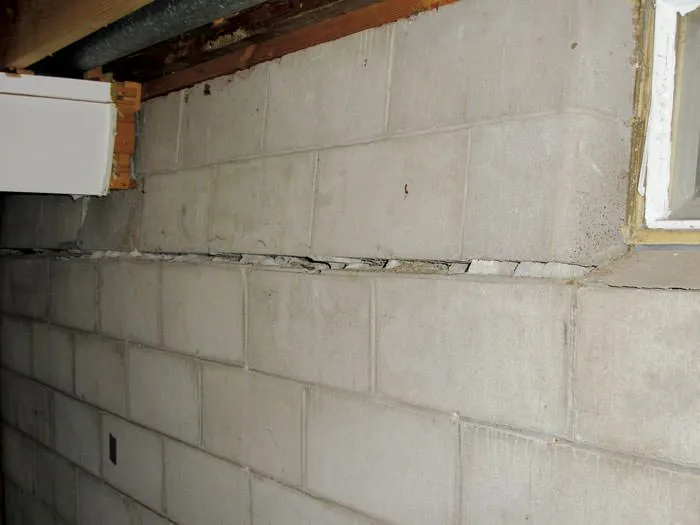
How To Identify Foundation Cracks
Not all foundation cracks are created equal, and knowing what you’re looking at is half the battle. Cracks vary in size, shape, and severity, and recognizing the red flags early can save you time and money while preventing more serious structural problems. Here’s a breakdown of the most common types of foundation cracks and what they might mean:
- Hairline Cracks: These barely-there cracks are thin as a pencil line and often appear when concrete cures or settles. Alone, they’re usually harmless, but if they start to lengthen or widen, it’s time to take a closer look—or get someone who knows what they’re doing to take that closer look for you.
- Vertical Cracks: Seeing a straight, vertical line running down your foundation wall? That’s often just your home’s way of saying, “Hey, I’m settling in.” These cracks typically result from natural settling and don’t scream “structural danger zone.” That said, even a quiet whisper can turn into a shout if water decides to wiggle its way through.
- Horizontal Cracks: Bad news. These cracks mean business. They often signal that your foundation is struggling against outside forces, such as hydrostatic pressure from water-saturated soil. Left alone, horizontal cracks can lead to bowing walls and significant structural damage. If you spot one, don’t shrug it off. Call a pro.
- Stair-Step Cracks: Found more often in homes with block or brick foundations, these cracks resemble—yup—stair steps. They’re usually linked to soil movement or settling issues, and while not always an emergency, they can escalate quickly. Keep an eye out, and if they seem to grow or deepen, you’ll need professional input.
- Water Stains and Efflorescence: Sometimes a crack doesn’t announce itself in an obvious way. Instead, you might notice discoloration, dampness, or a white, powdery residue (that’s efflorescence, in case anyone asks at trivia night). These clues often indicate moisture creeping in through cracks, making the situation more immediate than it might look.
Being able to recognize these crack types can help separate casual wear-and-tear from the “you should’ve called a contractor yesterday” situations. Bottom line? If something feels off, don’t ignore it. Foundations are not like fine wine—they don’t age gracefully without attention.
Why Foundation Crack Repair Is Essential
Foundation cracks are not just cosmetic issues; they are early warning signs of larger, more expensive problems waiting to unfold. In Pelham, NH, where seasonal temperature shifts and soil dynamics can wreak havoc, addressing cracks promptly is a matter of safeguarding your home’s future.
First and foremost, cracks in your foundation are gateways for water intrusion. Even minor fissures can allow moisture to seep in, leading to damp basements, mold growth, and in extreme cases, full-blown flooding. Left unchecked, this creates an environment prone to structural decay and compromises your indoor air quality—a silent threat to both your home and health.
Beyond moisture issues, cracks undermine your home’s structural integrity. What begins as a seemingly harmless hairline mark can grow into a web of instability, leading to bowing walls, sagging floors, and uneven doorframes. In worst-case scenarios, the safety of your entire property is at stake. Structural repairs at this stage are not just expensive but also incredibly invasive.
Then there’s the financial aspect. Decreased home value is a real concern, as visible foundation issues are a red flag for prospective buyers. Even if you’re not planning to sell immediately, a cracked foundation is a liability that can turn into a deal-breaker. A proactive repair is an investment that saves you from future regret.
Finally, delaying action almost always results in higher repair costs later. A quick epoxy injection or sealing job today might stave off the need for underpinning or full foundation replacement tomorrow. As with most home maintenance tasks, catching the problem early is financially savvy.
In short, foundation crack repair is not optional; it’s vital. Ignoring the problem not only risks your home’s stability but also chips away at its longevity, marketability, and overall livability.
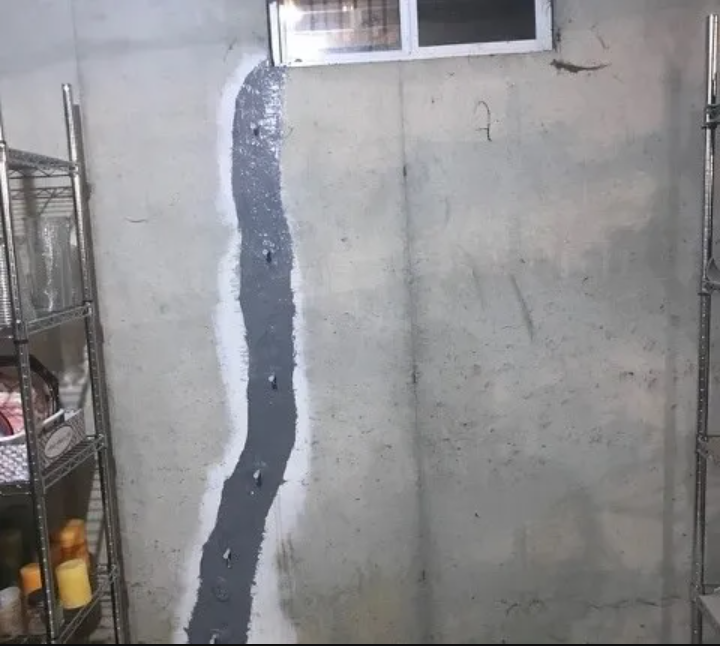
Steps for Foundation Crack Repair in Pelham, NH
Cracks in your foundation aren’t just going to fade into the background—they need to be dealt with, and sooner rather than later. Here’s how to tackle them head-on with a pragmatic, step-by-step approach:
- Assessment: First, size up the problem. Are the cracks hairline-thin or wide enough to warrant concern? Vertical or horizontal? Take note of any water stains, shifting walls, or uneven floors. If anything looks suspect—or if you’re just not sure—call in a professional to evaluate the damage. Trust me, guessing is not a strategy.
- Surface Prep: No shortcuts here. Clean the area thoroughly by removing dirt, debris, and any lingering moisture around the cracks. You want the repair materials to bond well, and that’s not happening on a dusty, wet surface. A stiff brush and a little elbow grease work wonders.
- Seal Small Cracks: For hairline or minor cracks, use an injection system with epoxy or polyurethane. These fillers penetrate into the cracks, creating a durable seal that keeps water out. These kits are reliable quick-fixes for smaller issues, and you can even tackle them yourself if you’re comfortable rolling up your sleeves.
- Reinforce Larger Cracks: Bigger problems call for bigger solutions. Structural cracks or noticeable damage might require carbon fiber straps to stabilize the area, or even helical piers to support shifting foundations. At this stage, you’re moving into professional repair territory—don’t wing it.
- Address Water Issues: Consider the long game. Even after sealing the cracks, the root cause still needs fixing. Poor drainage? Install gutter extensions, rework the slope of your yard, or add French drains. The goal is to prevent water from pooling around your foundation, where it inevitably finds its way into trouble.
- Monitor & Maintain: A single repair doesn’t equal a lifetime fix. Keep an eye out for new cracks, changes in air circulation, or signs of moisture. Cracking can be a “one-shot” issue for some homes, but in a place like Pelham, NH, with its shifting soils and seasonal swings, periodic vigilance is key.
These steps might not include frills or glamor, but they’re the backbone of stopping foundation cracks in their tracks. It’s a straightforward, systematic approach that ensures you’re patching up both the problem and the cause behind it.
Common Repair Techniques Professionals Use
When it comes to repairing foundation cracks, not all fixes are created equal. The severity, location, and cause of the issue will guide the method used. Here are the most effective techniques professionals in Pelham, NH rely on to keep homes standing strong:
- Epoxy and Polyurethane Injection: These are the go-to solutions for sealing cracks in poured concrete foundations. Epoxy is used when structural integrity is a concern—it bonds so tightly it’s often stronger than the concrete itself. Polyurethane, on the other hand, is great for cracks where water is creeping in. Its flexibility allows it to expand and contract with seasonal movement, perfect for handling Pelham’s freeze-thaw cycles.
- Carbon Fiber Reinforcement: Think of carbon fiber straps as armor for your foundation. Lightweight yet incredibly strong, these strips are bonded over structural cracks using industrial-grade epoxy. They provide added strength to resist future stress, especially for cracks caused by lateral soil pressure or wall bowing. Once applied, they’re nearly flush with the surface and can even be painted over for a clean finish.
- Helical Piering: For serious settling issues, helical piers are the cavalry. These screw-like steel supports are driven deep into stable soil or bedrock, transferring the weight of the home away from unstable ground. This method not only arrests further movement but can sometimes even lift the foundation back to its original position. Given Pelham’s mix of rocky soil and shifting seasonal moisture levels, it’s a common approach for homes with uneven floors or sinking corners.
- Water Management Systems: Fixing cracks without addressing water problems is like mopping up a spill while the faucet’s still running. Professionals often recommend integrated water management solutions, such as French drains, sump pumps, and vapor barriers. These help mitigate hydrostatic pressure—the constant force of groundwater pushing against your foundation—before it can wreak havoc.
Each of these methods comes with its own set of costs and timelines, but they all share one thing: they’re best left to experienced hands. DIY injections can fail if the crack’s cause isn’t addressed, and improper pier installation can worsen the problem it’s meant to solve. Professional contractors bring not just the materials, but also the know-how to match the repair to the problem—a must when protecting your home from the unique challenges of Pelham’s environment.
Preventing Future Foundation Cracks
Foundation maintenance isn’t glamorous, but a little effort now can save you from major headaches down the road. In a place like Pelham, NH—where winters bite hard and the summers bring humidity—taking proactive steps to protect your foundation is non-negotiable. First, your greatest ally is drainage. Water is the number one enemy of a healthy foundation, so start by making sure your yard slopes away from your house. If your gutters resemble a science experiment or your downspouts dump water right next to the foundation, fix that yesterday. Extend downspouts by at least five feet and clean out debris regularly. A French drain system can also work wonders if standing water is a repeat offender in your yard.
Next, pay attention to the moisture levels in the soil. Extreme swings between drought and oversaturation wreak havoc on your foundation by causing soil movement. Avoid excessive watering near your foundation during dry spells, and make sure water isn’t pooling after a heavy rain. Balance is key here. Regular inspections are another smart move. Twice a year, take a flashlight and give your basement walls or crawl space a good once-over. Look for new cracks, signs of shifting, or unwanted moisture. Think of this as your foundation’s annual health check-up—catching potential issues early is always cheaper and less disruptive than dealing with big repairs later.
Lastly, tackle seasonal maintenance with discipline. Fall is a great time to seal up any minor cracks with epoxy before winter sets in. The freeze-thaw cycles common in Pelham’s winters can make even tiny cracks expand, so don’t wait for spring to roll around to address them. Keep an eye on nearby trees, too. Their roots can grow into your foundation or suck moisture out of the surrounding soil, leading to uneven settling. A solid foundation isn’t just about concrete and steel—it’s about awareness and upkeep. Guard it well, and it’ll guard your home for decades.
When To Call a Professional
Foundation repair can be a slippery slope—one moment you’re sealing up a tiny crack, and the next, you’re standing ankle-deep in water wondering why your basement feels like a swamp. While some repairs can be handled with a quick trip to the hardware store, others call for professional backup. Knowing when to let the experts take the wheel can mean the difference between a simple fix and a spiraling nightmare.
Here’s the hard truth: If a crack is wider than ⅛ inch, it’s already pushing into “don’t mess around with this” territory. These aren’t just cosmetic blemishes—they can signal significant structural or water pressure issues lurking beneath the surface. Then there are the horizontal cracks and stair-step patterns. These aren’t DIY projects; they’re SOS flags. Horizontal cracks, in particular, often indicate your foundation is straining under hydrostatic pressure or soil movement, both of which can compromise the entire structural integrity of your home.
Water is another red alert. If you’ve repaired cracks yourself and are still finding puddles or damp walls, it’s time to quit guessing. Persistent moisture issues can lead to mold, rot, and long-term damage you don’t want to pay for later. Similarly, if you notice your foundation doing anything weird—like bowing, bulging, or sinking—don’t grab a caulking gun. Grab your phone.
The good news? Professionals bring more than just fancy tools. Qualified contractors and structural engineers can assess the full scope of your foundation’s condition, use diagnostic equipment you don’t have, and recommend the repairs that will actually fix the root issue instead of just masking the symptoms. They’ll save you time, stress, and probably a lot of money in the long run. As a general rule: when in doubt, call it out. Never gamble with your home’s foundation—it’s quite literally the thing holding the rest of your house up.

Living in Pelham, NH: Local Considerations
Pelham’s weather and geography don’t exactly cut your home any slack. The frosty New England winters bring freeze-thaw cycles that can cause soil to shift and expand, putting extra pressure on your foundation. Summers aren’t much kinder, with high humidity that can saturate the ground and lead to swelling soil. Toss in the region’s naturally rocky terrain, and you’ve got a trifecta of factors that can push, pull, and crack even a well-built foundation over time.
Homeowners in Pelham need to think about foundation care as not just an occasional task but an ongoing responsibility tied to the rhythms of the area’s climate. Those late-winter frosts that creep into March? That’s when subtle foundation shifts can really start to show up. The heavy rains in spring and fall? Prime time for water infiltration to sneak into existing cracks.
In this part of New Hampshire, proactive maintenance is the name of the game. Whether it’s sealing up a hairline crack before it widens or addressing drainage issues before water finds an unwelcome home in your basement, staying one step ahead of these natural forces is crucial. Foundation issues here aren’t just hypothetical—they’re a near certainty if you allow small problems to fester.
So, while Pelham offers a scenic slice of classic New England charm, living here means your home battles the region’s elements year-round. Addressing foundation cracks promptly and prioritizing preventative care ensures that your home’s structural integrity isn’t just good enough to last—it’s good enough to thrive in Pelham’s unique environment.
Reviews from Happy Customers
Our top priority is customer satisfaction, and we work closely with clients to understand their unique needs and goals.




